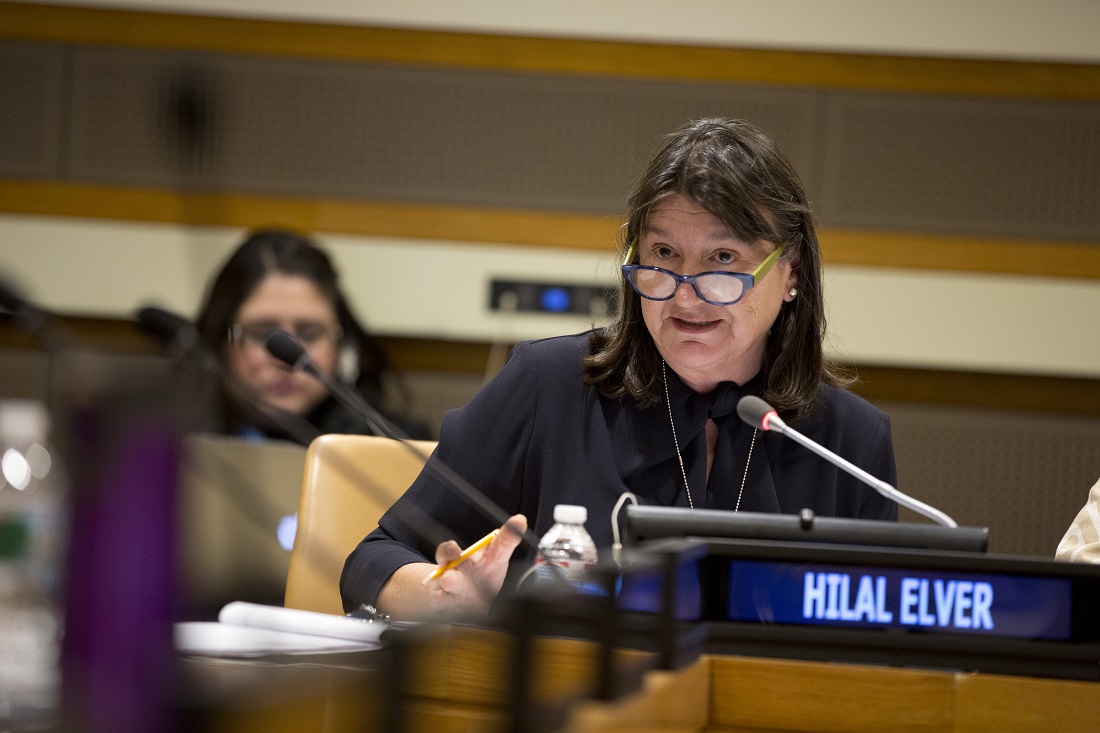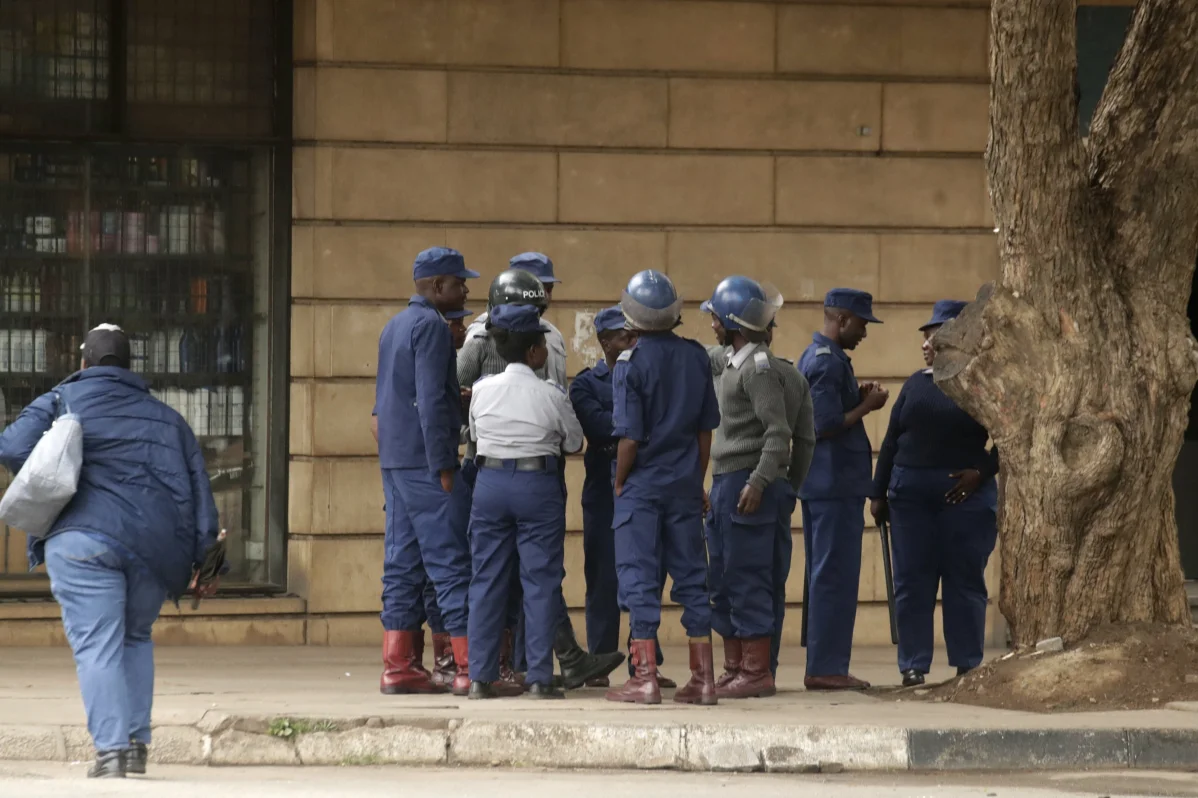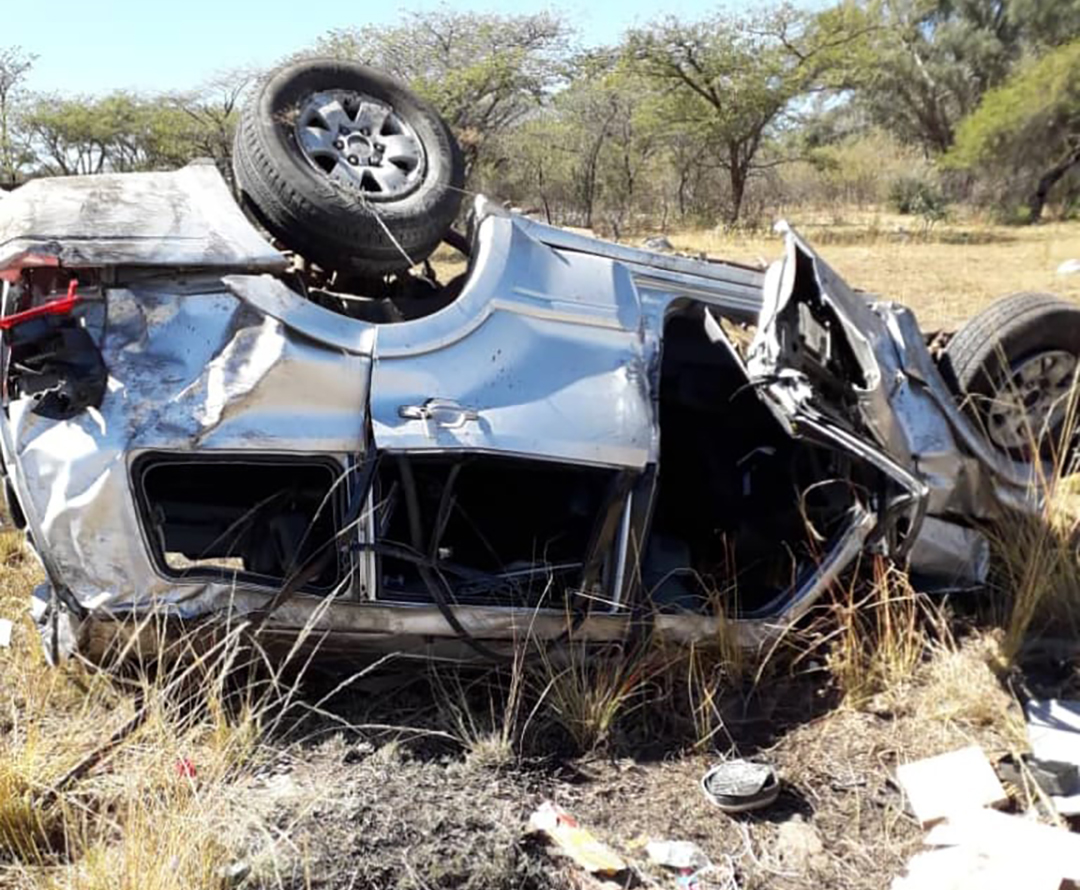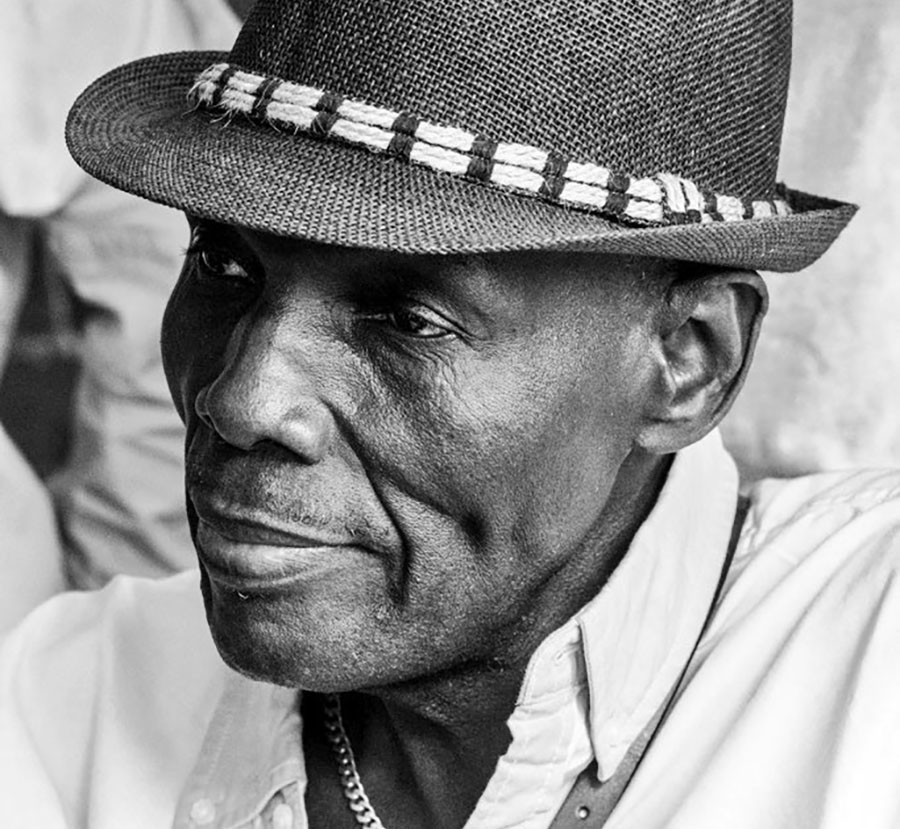Harare, November 28, 2019
Ladies and Gentlemen,
At the invitation of the Government, I visited Zimbabwe from 18 to 28 November 2019 to assess the prevailing situation, challenges and good practices concerning all aspects of the right to food.
At the outset, I would like to express my deep appreciation to the Government of Zimbabwe for extending an invitation to visit the country. This invitation is itself an expression of the Government’s willingness to open its doors to international human rights mechanisms and, with it, to improve its own human rights record. I thank the representatives of the Ministry of Foreign Affairs and International Trade and the Ministry of Justice, Legal and Parliamentary Affairs for facilitating and organizing the official meetings. I would also like to thank the United Nations Resident Coordinator, the United Nations Country Team and the United Nations Development Program in Zimbabwe for so effectively supporting my team before and throughout the visit. I benefitted greatly from the opportunity to exchange views with representatives of the diplomatic community, and United Nations agencies here in Harare.
During my visit, I met with the Minister of Local Governance and Public Works, the Minister of Health, the Minister of Finance and Economic Development Ministry of Public Service, Labour and Social Welfare and the Director of the Food and Nutrition Council. I very much regret that my requests to meet with the most critical Ministry, that is, the Ministry of Lands, Agriculture, Water and Rural Resettlement did not work out.
I also met with the Zimbabwe Human Rights Commission as well as with farmers’ unions and farm workers. I had extensive and fruitful meetings with devoted individuals, farmers, lawyers, doctors and dieticians as well as members of non-Governmental organizations and activists.
In Harare, I visited Parirenyatwa hospital, Hupenya Hutswa Children’s Home, and Makomo Primary School in Epworth. I had also had the opportunity to visit Mwenezi in Masvingo Province where I met with the provincial authorities and farmers’ communities. In Masvingo, I also visited Shashe Farm and the Agroecology School, an impressive model of ecological farming. In Mwenezi, one of the areas most affected by the food emergency crisis, I met with the beneficiaries of WFP food distribution.
I wish to warmly thank the many Zimbabweans who shared their personal stories of hardship, loss, and coping mechanisms. From the poorest suburbs of Harare to the drought-affected lands of Masvingo and Mwenezi, their devastating accounts lead to one undeniable conclusion: human rights must be anchored at the very core of Zimbabwe’s policy agenda if the country is to win its fight against hunger and malnutrition.
The observations I am presenting today are preliminary and incomplete. These assessments are based on the information collected during my mission as supplemented by relevant reliable reports, I will draft a more comprehensive and updated report that will be presented to the United Nations Human Rights Council in March 2020.
1. General observations
Zimbabwe has gone through different political transitions in the course of its experience since achieving independence in April 1980, with the late Robert Mugabe serving as its political leader from 1987 to 2017. The post-President Mugabe transition in November 2017 sparked celebrations in the streets and gave rise to hopes of economic recovery for the resource-rich nation of Zimbabwe. In 2018, Zimbabwe’s electoral commission declared that Emmerson Mnangagwa was elected president with 50.8 percent of the vote.
Zimbabwe’s economy relies mostly on its mining and agricultural sectors. From 2014 to 2017, growth dropped following poor harvests, low diamond revenues and decreased investment. The country’s economic performance is also impeded by low mineral prices, a poor investment climate and an extremely high government wage-expense. In addition to the searing drought which affected the 2018/2019 agricultural season, in March 2019, Zimbabwe was struck by Tropical Cyclone Idai which destroyed most of the expected harvest and the existing infrastucture. As a result, the country suffers from a spiraling inflation and chronic shortages of cash flow, essential staple food, clean water, electricity and health services.
This poor economic performance negatively affected the livelihoods of both rural and urban households accompanied by severe cash shortages, while at the same time the price of cereals increased as much as 100%. The proportion of household expenditure on food rose to an astronomical 70% of disposable income as compared to 55% in 2018. 1 As of today, this proportion keeps on increasing due to hyper-inflation.
2. Food insecurity crisis
I cannot stress enough the urgency of the situation in Zimbabwe.
Currently, 60% of Zimbabwe’s population of 14 million is considered food-insecure, living in a household that is unable to obtain enough food to meet basic needs.
By the end of this year, in only a few weeks, the food security situation is expected to worsen with an estimated 8 million people requiring urgent action to reduce food consumptions gaps and save livelihoods.
Widespread poverty, limited employment opportunities, liquidity challenges, pervasive corruption, economic instability, mismanagement of funds, natural disasters, recurrent droughts, and economic sanctions and conditionalities by the US and the EU, all contribute to Zimbabwe’s current crisis.
Rural food insecurity
According to recent data released by the Zimbabwe Vulnerability Assessment Committee (ZimVAC), a staggering 5.5 million people, 38% of the rural population, is currently facing food insecurity. Periodic droughts, poor rains and erratic weather patterns negatively impacted agricultural production and livelihood prospects. Adverse weather conditions halved the 2019 cereal harvest in Zimbabwe. The number of food insecure people is expected to almost double in early 2020 compared to the same period in the prior year. The peasant community, which produces 70% of staple foods (maize, millet and groundnuts), is particularly vulnerable. It has access to less than 5% of irrigation facilities, and is struggling to access productive resources due to cash shortages.
In addition to severe drought conditions that severely affected the 2018/2019 agricultural season, Zimbabwe was struck by Tropical Cyclone Idai which caused a flood induced disaster and a trail of devastation in the greater part of the Eastern Highlands and some areas in the southern part of the country, destroying most of the expected harvest.
According to the most recent 2019 Integrated Food Security Phase Classification (IPC) analysis 2, 25% of the rural population are estimated to be in Crisis or Emergency levels of food insecurity (IPC Phase 3 and 4) and face moderate to large food consumption gaps. Moreover, agricultural labour opportunities have been limited due to the poor productivity, hence affecting the most vulnerable segments of Zimbabwe’s population.
Additionally, households that depend largely on livestock production have been affected by animal diseases, induced by water shortages and other scarcities, while prices have declined due to poor conditions. Livestock being the most important asset of rural communities in periods of food crises, the income for these households has fallen sharply. I saw the consequences of this emergency food crisis in the province of Masvingo and the district of Mwenezi where the women and men I spoke to told me that they ate only one portion of sadza a day. Without access to adequate food and a diversified diet, rural Zimbabweans, particularly younger children, will barely survive, and if they do, will have to face a variety of health and development challenges.
With most of the men gone to work in neighbouring countries, women bear the primary responsibility of feeding their children, as well as the sick and elderly. They are only marginally able to meet minimum food needs by depleting essential assets or employing crisis or emergency coping strategies. While acknowledging the crucial importance of external assistance, the women and men I met expressed their frustration at being dependent on food assistance and told me that they would rather receive the necessary resources and tools to realize their own potential and skills. For instance, in Mwenezi, I was impressed to see how, with the assistance of international development aid, the World Food Programme and the local government, a group of women came together to build a small dam and cultivated a vegetable garden for their own consumption and even started selling produce in the local market.
Although the immediate obligation to provide food aid is the duty of governments, in times of emergency the international community has the responsibility to help countries in dire situations. In Zimbabwe, the international humanitarian response system has been essential in reducing the negative effects of cyclone Idai and the repeated droughts on food security. However, I note that the imposition of unilateral economic sanctions and conditionalities has contributed to a negative image of the country, thereby adversely impacting of the level of international aid to Zimbabwe, in comparison to neighboring countries that suffered similar adverse effects from cyclone Idai.
I was also concerned to hear many humanitarian agencies complain about the difficulties they faced in getting clear figures on the current stock levels of maize and wheat staples. Many of my interlocutors expressed serious worries that the current stock may be too low to cover the urgent needs of the most affected communities beyond January 2020. However, the Government representatives ensured me that the shortage of maize importation will be liberalized to overcome food insecurity for the most vulnerable sections of the society.
While we are dealing with a dire situation, government, humanitarian agencies, and donors community should see this crisis as an opportunity to lend primary support to smallholder farmers, especially women. This would help shift the current food and agriculture towards more diversified and sustainable food production and consumption systems.
Urban food insecurity
According to ZimVAC, Urban food insecurity is now affecting 2.2 million.
The currency crisis, a heavy tax system due to the imposition of austerity measures, unpredictable inflation rates, high levels of unemployment and low wages all contribute to the food crisis affecting urban households.
As economic inequalities are on the rise, the once striving middle-class of Zimbabwe is severely impacted by the crisis. Civil servants, doctors, nurses, and teachers are no longer able to feed their families without alternative sources of livelihood. Many of the people I spoke to in Harare, told me that they could only afford one meal a day.
I witnessed the consequences of the disastrous economic crisis on the streets of Harare, with people spending long hours queuing for fuel, as well in front of banks to get cash, and in shops to obtain cooking gas or water.
The Zimbabweans I spoke to in Harare and its suburbs explained that even if food is generally available in supermarkets, the erosion of their incomes combined with an inflation skyrocketing to more than 490%, made them food insecure.
Waves of people have escaped from poor agricultural productivity in rural areas to cities in search of job opportunities to improve their access to sufficient and adequate food and other public services. Most of them ended up living in the informal settlements that are multiplying in the suburbs of Harare. Among other risks, spreadable diseases are likely to increase due to the use of unsafe and inefficient water and open sewage. I visited one of the settlements located south of Harare. Approximately 5000 people were living in inhuman conditions without any infrastructure, without jobs, without hope, and help. One resident of Chikos, told me that “‘I do not think they even know we exist.”
Most of the public schools in Harare are no longer able to continue their school feeding programmes. At best, some schools are able to offer one meal a week per classroom.
I also observed the consequences of the failure of the health system. I received disturbing information that public hospitals have been reaching out to humanitarian organizations after their own food stocks were exhausted and medical equipment no longer operational. The hospital I visited was nearly empty, because of doctors’ strike.
The most vulnerable segments of society, including the elderly, children and women, are forced to rely upon coping mechanisms such as, school dropout, early marriage, and sex trade to obtain food, behavioral patterns that often are accompanied by domestic violence. This kind of struggle for subsistence affects their physical wellbeing and self-respect. It creates behavior and conditions that violate their most fundamental human rights.
Malnutrition
The country’s food production dramatically decreased with consequences on the nutrition and diet of Zimbabweans. Already severely lacking diversity and dependent largely on maize, the Zimbabwean diet is not affordable. In times of emergency there is a tendency to think about the quantity of the food, instead of its quality. However, even a short term poor diet creates severe malnutrition that has a long term adverse impact on children, especially 0 to 2 years of age.
Chronic malnutrition and stunting is endemic throughout the country, where 90 percent of children aged 6 to 24 months consume the minimal diet to survive. The vast majority of children I met in the rural parts of Masvingo and in Mwenezi, as well as in informal settings in the suburbs of Harare, appeared severely stunted and underweight due to reduced food availability caused by high levels of poverty and the consequence of the recurrent drought and floods.
The situation is also dire in urban settings. The dieticians and paediatricians I met in Parirenyatwa hospital in Harare explained to me that the death of children from malnutrition had been on the rise in the last few months. I have myself witnessed the ravaging effects of malnutrition on infants deprived of breast milk and micronutrient supplementation because of their own mothers’ lack of access to adequate food. Children are often fed with maize porridge or sadza, which are not sufficiently nutritious. At times, they eat some portion of vegetables, mostly cabbage.
The first 1,000 days of life determine a person’s physical and intellectual development. It is estimated that children who receive appropriate nutrition during this period are 10 times more likely to survive potentially fatal childhood diseases. They are also more likely themselves to have children who are healthier.
Partisan distribution of food
Throughout my visit, I received allegation about partisan distribution of food aid, favoring those who support the ruling party. Individuals or communities, perceived to belong to the opposition or deemed insufficiently loyal to the ruling party, are reportedly deprived of their right to food in the regions most affected by the food crisis. The Minister Public Service, Labour and Social Welfare explained that they followed a set of criteria provided by the Food and Nutrition Council to identify the most vulnerable individuals who could benefit from food distribution.
In accordance with the Zimbabwe Constitution, the government should permit all people to have access to food aid without any reference to their regional origin or residence, or political affiliation. The government should instruct local authorities in charge of beneficiary and distribution lists to abide by the principle of non-discrimination and to follow the criteria set up by the Food and Nutrition Council. The Government should also monitor the food distribution at the local level to find out whether such incidents occur. Moreover, special effort should be made to ensure access to highly vulnerable populations first, such as women and children head of households, the elderly, disabled and those affected by HIV/AIDS.
3. Legal and Institutional structures and policies relevant to the right to food
Zimbabwe must be commended for its constitutional protection of the right to food and a sophisticated set of human-rights based national laws and policies on food and nutrition. Article 77 of the Constitution of the Republic of Zimbabwe explicitly guarantees the right to adequate food. Article 81/1, Article 11, Article 15, Article 19/2, and Article 21/2 further provide for the right to food in special circumstances.
The Government also achieved the institutionalization of the promotion of human rights through the establishment of the Zimbabwe Human Rights Commission (ZHRC). There is a need to ensure that the Commission is adequately funded so as to ensure that it is able to discharge its constitutional obligations without any hindrance.
Furthermore, Zimbabwe has adopted a number of excellent policies to implement the right to food, amongst which are the National Nutrition Strategy, the Transitional Stabilisation Programme, the Zimbabwe Agriculture Investment Plan, the Comprehensive Agricultural Policy Framework, the National Policy on Drought Management and the Food Deficit Mitigation Programme. My interlocutors in the Government all expressed a strong commitment to a zero hunger policy. I would like to particularly praise the work undertaken by the Food and Nutrition Council to anchor Zimbabwe’s food and nutrition polices in human rights standards.
In 2011 the Presidential Inputs Scheme program was introduced to guarantee household food security, providing maize seed and fertilizer targeting smallholder farmers irrespective of agro-ecological region. However, inputs sometimes reach farmers late for the impact to be maximized. Further schemes could be enhanced by the inclusion of a livestock component in addition to cereals.
In 2016, the Government introduced an agricultural scheme, the Targeted Command Agriculture, aimed at ensuring food self-sufficiency and promote commerical farming. The scheme targeted farmers near water bodies who could put a minimum of 200 hectares under maize per individual. Each participating farmer was required to commit to 5 tonnes per hectare towards repayment of advanced loans in the form of irrigation equipment, inputs, and chemicals, mechanized equipment, electricity and water charges. Farmers can retain a surplus product produced in excess. The programme is still new, and I heard contested views about its actual impact, especially with regards to the significant amount of money invested.
Subsidies
Zimbabwe has a long history of providing subsidies for basic services including for food items and agricultural inputs. The Government is in the process of putting an end to its policy of blanket subsidies and is shifting to targeted ones due to the budget constraints. However, in times of food crises, ending subsidies for staple food of low income families is not acceptable.
During my meetings, the Government insisted that it continues to subsidize grain through its own programme of importation and distribution, managed by the Grain Marketing Board (GMB), and to work with private companies to meet the most urgent food needs of the population and to ensure the equitable distribution of food supplies. However, this is also a very contested and sensitive area of policy. Therefore openness and transparency should drive the process, and conflict of interest should be carefully investigated.
4. The root causes of the obstacles to the realization of the right to food
Beyond the current food crisis, I observed more structural and systemic obstacles to the realization of the right to food in Zimbabwe.
Agriculture and Land System
Agriculture is the backbone of Zimbabwe’s economy as Zimbabweans remain largely a rural people who derive their livelihood from agriculture and other related rural economic activities. The agricultural sector provides employment and income for 60-70 percent of the population, supplies 60 percent of the raw materials required by the industrial sector and contributes 40 percent of total export earnings. It contributes approximately 17 percent to Zimbabwe’s GDP. As the main source of livelihood for the majority of the population, the performance of agriculture is a key determinant of rural livelihood resilience, poverty levels and social cohesion.
Zimbabwe has a number of distinct farming systems, which reflect historical land allocation and tenures as well as natural resources and available technologies. At independence in 1980, after close to 100 years of British rule, Zimbabwe inherited a dual agricultural system: the large scale commercial farming and small scale communal land, with the former mainly held in freehold and the latter de jure owned by the president, but de facto communally owned. Communal ownership confers individual rights to plots for houses, gardens and fields with shared and unlimited access to grazing land.
Land and access to it is of enormous value to Zimbabweans as the society is emotionally, traditionally and economically connected to the land. The Zimbabwean government began its land reforms to address the imbalances in land access, ownership and use that had existed in the country before independence. A number of reforms were implemented over the years, with corresponding modifications to the law and redistribution targets.
Land redistribution
The major land redistribution campaign began during the Mugabe period in 1980s and intensified in 2000, causing the expulsion of white farmers and in some cases farm workers. According to many of my interlocutors, the land reform altered the landscape of Zimbabwean agriculture and, over the years had serious negative effects on productivity. The Fast Track Land Reform programme (FTLRP), which generated significant attention in Southern Africa and beyond, was introduced in 2001 to speed up the redistribution of land.
Officially the land was divided into small-holder production units, so- called A1 schemes and commercial farms, called A2 schemes.
However, the reform has not delivered the outcomes the government intended. Instead, it resulted in a complex system, which structurally weakened the country’s agricultural infrastructure and contributed to Zimbabwe’s deteriorating social and economic conditions, most particularly the right to food.
The land was redistributed without facilitating and arranging access of the new small-scale farmers to the necessary technical and infrastructural resources. Commercial farms were divided without clear financial, institutional and technical support. Throughout the last two decades these uncertainties around land tenure have caused, and continue to contribute, to today’s food insecurity crisis.
Communal lands were generally situated in less fertile, non-arable land and high-density areas. As a result, the quality of soil and water deteriorated while productivity decreased. In the meantime, commercial farmers were either entirely expropriated or lost significant portions of their lands. Before the land reform, as few as 4000 commercial farmers owned 7.6 million hectares, 20% of the total land area of the country. In the aftermath of the land reform, approximately 160,000 families resettled in these areas. Although statistics are contested, it is widely accepted that 90% of the land formerly owned by white farmers were transferred to landless Zimbabweans, with war veterans being treated with special favour.
Land allocations are made through “offer letters”, which were reportedly assigned to ministers and other high-level officials, without any formal guidelines for these allocations. The re-allocation of land and farms expropriated from commercial farmers was reportedly done on a political basis, without any consideration being given to whether or not the new tenants possessed the needed the agricultural skills. As a result, many hectares of lands were left abandoned and unexploited – or managed by absent farmers through the so-called ‘cell phone farmers’ – while the existing tools, irrigation facilities and infrastructures slowly deteriorated.
Moreover, according to information we received, there does not seem to be any security of tenure or respect of property rights: at any given time lands can be confiscated and re-allocated to individuals deemed more loyal to the ruling party. Although such allegations are contested, a climate of uncertainty surrounds the security of land tenure. This situation discourages long-term investments.
Given the gross historical inequalities around access and ownership of land in Zimbabwe that were an aspect of the colonial legacy, pressure arose to find ways to redress the injustices of the past with respect to land ownership. However, to avoid harming the agricultural system and social relations, the land reform needed to be carried out in a responsible manner. This meant that rights needed to be protected and sustainable food production and food security maintained. On the basis of information received, this was not done, and explains a large portion of the troubles currently experienced by Zimbabwe.
Poor agricultural productivity
The performance of agriculture is a key determinant of rural livelihood resilience, and poverty alleviation. Poor agricultural productivity is one of the root causes of today’s severe food insecurity and poverty in Zimbabwe.
General challenges facing smallholder farmers (A1 type) include low and erratic rainfall, especially in non-arable lands access to water, low and declining soil fertility, low investment, shortages of farm labour, lack of support by public institutions in relation to credit, agricultural extension services, inadequate subsidies, difficulty to access markets, and overall poor physical and institutional infrastructures.
Commercial farmers do well in tobacco, cut flowers and cotton industry, in contrast to maize. The successful spheres of economic activity enjoy guaranteed to large foreign markets. Maize is confronted by market uncertainties.
Climate Change, Drought and Flood
Even though drought has long been cyclical in Southern African countries, because of the impacts of the climate emergency, these extreme weather events these natural events happen more often, with long-lasting consequences and damages. Disaster risk management, early warning systems and climate and ecosystem friendly production methods are widely available, and could ease the pain when drought and flood hit the country.
The Government of Zimbabwe should prepare for future droughts and floods carefully and make sure that all mitigation and adaptation measures are developed and implemented with the full and effective participation of those concerned.
Economic sanctions and conditionalities
I am also concerned about the negative impacts of the economic sanctions and conditionalities imposed on the Government of Zimbabwe and their indirect costs on the overall civilian population, particularly on right to food.
Zimbabwe has been under some form of sanctions since 2001. These targeted sanctions and conditionalities were imposed on the country following policy disagreements concerning the manner in which the land reform programme was handled, reflecting criticism of the political situation and human rights abuses.
While sanctions target certain individuals and institutions, they contribute to creating a very adverse environment for business, international trade and foreign investment. To some extent, they also contribute to the overall atmosphere of corruption, uncertainty, and food insecurity and unemployment for the most vulnerable people in the country, particularly in these times of emergency. It is my strong conviction, based on what I have learned during the course of this mission, that these economic sanctions worsen the existing inequalities and do not have any actual impact on their supposed targets. The conditionalities under the ZIDERA Act coupled with the failure by the Government to clear its arrears make it a serious challenge for the Government to access credit lines from international financial institutions. Such conditions clearly diminish the ability of the government to meet its obligation to adequately feed its people.
Given the economic and food emergency presently existing in the country, I urge concerned member states, development partners and the international financial institutions, including the World Bank and the International Monetary Fund, to ease the conditions imposed on the deployment of funds to the Government. For similar reasons, I urge the termination of all sanctions. In the same spirit, I also urge the Government to initiate the promised legal reforms to respect, protect and fulfill its human rights obligations, notably the rights to freedoms of expression, assembly and association, which are the necessary foundations of a human rights based approach to food security.
5. Vulnerable groups in focus
Farm workers
Farm workers, particularly of foreign origin, are the invisible and unheard victims of the current crisis. Following the Fast Track Land Reform and the subsequent expropriation of commercial farms, people working the lands were left without any safety nets. To this day, workers in commercial farms receive monthly wages as low as 300 to 400 Zimbabwean Dollars, the equivalent of 20 US Dollars, putting them below the World Bank levels of extreme poverty.
Many small-scale farmers working in the tobacco, horticulture and cottons sectors are contracted by commercial farming and therefore not in a position to negotiate the prices of their harvest or to pay their own farm workers due to a combination of extremely low earnings and high inflation.
Moreover, in some parts of the country, farm workers and small holder farmers – particularly those working in tobacco and sugar plantations – are not protected against the short and long-term damages of the spraying pesticides, partly lack of knowledge about the danger of chemicals or high cost of the protective gears to be given to farm workers.
I also received information that children as young as seven are doing hazardous work for meagre sums on sugar or tobacco plantations, performing tasks that threaten their health and safety or interfere with their education. I commend the Government of Zimbabwe for its ratification of the 2014 protocol to the Forced Labour Convention last May, which demonstrates its commitment to combating forced labour in all its forms. Where governments have enacted strong laws against child labour, and provided extensive information about hazards and how to provide protection, there has been some progress in keeping children out of the fields and protecting other workers. Let me add that child labour and other human rights abuses on tobacco farms in Zimbabwe severely tarnish the tobacco and sugar industry’s contributions to the country’s economic growth and improved livelihoods.
Women and children
Zimbabwean women constitute 70% of subsistence farming and food production in the country. Within the agricultural sector, labour is divided as 45.4% men and 54.6% women with the percentage of females being high because they are mostly unpaid family workers. It is worth mentioning that in Zimbabwe the unpaid contributing family worker rate stands at 39.4% men and 60.6% women. Approximately, 86 percent of women in Zimbabwe depend on the land for their livelihood and that of their families.
While women constitute the majority of the food producers in Zimbabwe, they encounter more barriers and challenges to sufficient and sustainable agricultural livelihoods, including limited access to land and productive resources (capital, labour, land, and mechanization and irrigation infrastructure). Poverty levels among female-headed households are higher than among male-headed households, and adverse health conditions disproportionately affect women. Low-productivity agricultural practices and lack of access to markets also affected rural women whose livelihoods depend on their own production. Generally, women in rural areas are left with the burden of working the land as well as caring for the children and elderly, while men search for jobs in cities or neighbouring countries.
Children and women bear the disproportionate burden of the ongoing food crisis. In a desperate effort to find alternative means of livelihood, women and children resort to coping mechanisms that violate their most fundamental rights and freedoms. As a result, domestic violence, school drop-outs, early marriage, prostitution and sexual exploitation are on the rise throughout Zimbabwe.
The harrowing stories I heard from resilient grandmothers, mothers or aunts desperately trying to save their children from starvation, in the midst of their daily hardships, will remain with me.
6. An alternative method to conventional agriculture: Agro-ecology
I would like to end these preliminary observations on the positive practice of the Agroecology School of the village Shashe, in the province of Masvingo, which offers a great inspiration for emancipatory rural initiatives.
I have seen how hundreds of peasant families share the farming and grazing plots in Shashe, producing a variety of food crops (grains, cereals, legumes, vegetables, fruit trees), medicinal plants, roots and livestock (cows, sheep, goats, pigs, chickens, turkeys). A significant number of them save, reproduce and reuse their own seeds. Farmers told me that without having your own seed bank, they did not fell like “proper farmers”. Farming is still the most important source of income and livelihood strategies, despite the dryness of the soil. Some of the surplus production is exchanged locally or sold in the nearest town. When maize and millet yields are high, a number of Shashe peasant families supply Masvingo City markets, through the Grain Marketing Board.
The Shashe Agroecology School promotes farmer-to-farmer trainings based on traditional knowledge systems and work to incorporate the principles of agroecology and food sovereignty. While visiting the school, I met with a group of women small-scale farmers who travelled from the province of Mashonaland Central to share their experience as contract farmers in tobacco plantations and learn new practices to improve their production and working conditions.
Amongst the most important features guiding the school are the acknowledgement and implementation of sustainable ways of living and reproduction. The School’s strategies constantly adapt to the versatility of weather patterns, thus demonstrating that a sustainable and sufficient production of food items is possible in the long-term despite the effects of climate change. More importantly, the diversification of food production will undoubtedly help address the malnutrition problem in the country, and release the dependency on maize.
If this model of agro-ecology was to be extended, Zimbabwe’s food insecurity could most certainly be contained and give hope to future young farmers, after many years of uncertain land reforms.
Conclusion
The people of Zimbabwe are slowly getting to a point of suffering a man-made starvation.
Political polarization, economic and financial problems and erratic climatic conditions all contribute to the storm of food insecurity currently facing a country once seen as the breadbasket of Africa. Today, Zimbabwe counts amongst the four highest food insecure States, alongside conflict ravaged countries. With its large reserves of gold, platinum, diamonds and other metals and minerals, as well as fertile agricultural lands the country still has an enormous economic potential, which could lift the entire region. Good fiscal and economic governance could change the course of Zimbabweans’ economic and social conditions, particularly their right to food. It is the primary responsibility of the Government of Zimbabwe to ensure that the right to food of its citizens is respected, protected and fulfilled.
I call on the Government to fulfil the obligation of the right to food by providing food assistance throughout this period of food insecurity emergency and ensure that social safety nets are established for the most deprived segments of its population, without any form of discrimination and with respect to the principles of transparency and accountability.
However, the right to food does not only require States to provide assistance in times of emergency but also to provide an enabling economic and working environment in which people can use their full potential to produce or procure adequate food for themselves and their families. A human-rights based approach to food security is therefore critical to meet the needs of the population, which includes the participation of all its relevant actors in decision-making. This cannot not be effectively implemented without democratic order, and respect for all rights, including civil and political right.
In the long-term, it is my strong view that the Government should adopt the necessary measures to reduce the country’s dependence on food importation, especially of maize, particularly given the volatility of foreign exchange rates. It is vitally important for the country to create the conditions for the production of its own food and the protection of traditional seeds, to ensure the country’s self-sufficiency, food sovereignty and preparedness for the climate shocks that may hit the country.
I also encourage the Government to initiate a master plan for a sustainable and nutrition-sensitive food production system which will take into account the countries’ natural resources and climatic conditions with a view to diversify the diet of its people. The Government should also elaborate a national agroecology and sustainable agriculture strategy which could be based on the model of the Shashe Agroecology School, amongst others, and include good practices from donor countries and relevant international organizations, such as WFP and FAO.
Finally, let me echo the words of a Government official I met in Harare: “food security is national security”. Never has this been truer than in today’s Zimbabwe. Food insecurity and land conflict increase the risks of civil unrest and insecurity. The international community must scale up its humanitarian assistance and provide for most of the resources needed to eliminate hunger and malnutrition in times of food emergency. I urgently call on the Government and the international community to come together to put an end to this spiraling crisis before it morphs into a full-blown social unrest. Early warning mechanisms aimed at monitoring the entire set of economic and social rights should be put in place to prevent more suffering. The great and resilient people of Zimbabwe deserve no less.
Thank you.
















